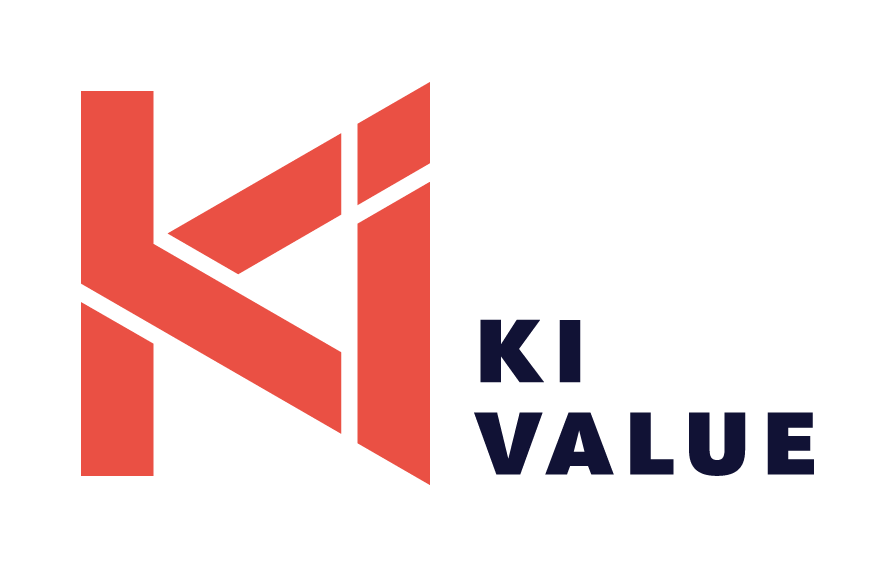To make KIVALUE work and improve your user experience, we log user data and employ essential cookies. By using KIVALUE website, you agree to our Privacy Policy, including cookie policy.
New Partnership with Pricen in Italy: Read Here
BLOG //
Merchandise Planning: The Key to Department Store Success
Merchandise Planning helps Department Stores by anticipating trends and stocking products that appeal to their target customers at any given time. When effective merchandise planning is automated and powered by cutting-edge AI, it can transform the process.
As consumers, we have really high expectations for our fashion. We want what we want, when we want it. ALL of it. And we don’t want to wait, or we’ll go somewhere else.
If a fashion retailer has any hope of pleasing customers, they need efficient and reliable merchandise planning that’s tailored to their customers’ needs and wants.
It can mean a department store’s success or failure. Retail merchandise planners may be the key players in getting
If a fashion retailer has any hope of pleasing customers, they need efficient and reliable merchandise planning that’s tailored to their customers’ needs and wants.
It can mean a department store’s success or failure. Retail merchandise planners may be the key players in getting
CONTENTS
//
//
//
//
profitability out of the assortment, but too often they lack the resources they need.
So how can it change for the better? Having a look at merchandise planning, why it's needed, and how it can transform a department store can shed insight on why it should be front-and-centre in retail strategy.
We’ll also take a closer look at one iconic department store, and how automating its merchandise planning has brought huge growth and preserved its iconic status.
So how can it change for the better? Having a look at merchandise planning, why it's needed, and how it can transform a department store can shed insight on why it should be front-and-centre in retail strategy.
We’ll also take a closer look at one iconic department store, and how automating its merchandise planning has brought huge growth and preserved its iconic status.
What is Merchandise Planning in the Fashion Industry?
Merchandise Planning is selecting and managing a retail assortment to maximise sales and profitability. It involves the end-to-end process of combining 5 main jobs:
Merchandise Planning is selecting and managing a retail assortment to maximise sales and profitability. It involves the end-to-end process of combining 5 main jobs:

-
 Analysing Sales Data
Analysing Sales Data -
 Customer Behaviour
Customer Behaviour -
 Excellent Forecasting
Excellent Forecasting -
 Informed Buying
Informed Buying -
 Suppliers & Stocks
Suppliers & Stocks
Retail merchandise planners work closely with buyers to ensure that the right products are available at the right time and at the best price. They determine the best quantity, pricing, and timing of product releases so that profits roll in.

Struggling with Merchandise Planning?
Discover how by scrutinising sales data and trend insights you can handpick the perfect blend of products for your customers.

Why is Merchandise Planning Needed?
Merchandise planning ensures that a store's product assortment meets both the needs and desires of its customers. Analysing sales data and consumer trends gives merchandise planners the knowledge they need to make the best decisions about what products to stock, when to release them, and how much to charge for them.
This helps to maximise sales and profitability while minimising the risk of overstocking or understocking. It means fewer trends are overlooked.
Effective merchandise planning also helps retailers to manage inventory levels, and avoid both under- and over-ordering. This means there are fewer sales. It means fewer customers taking their business elsewhere because they found it available and cheaper.
Merchandise planning ensures that a store's product assortment meets both the needs and desires of its customers. Analysing sales data and consumer trends gives merchandise planners the knowledge they need to make the best decisions about what products to stock, when to release them, and how much to charge for them.
This helps to maximise sales and profitability while minimising the risk of overstocking or understocking. It means fewer trends are overlooked.
Effective merchandise planning also helps retailers to manage inventory levels, and avoid both under- and over-ordering. This means there are fewer sales. It means fewer customers taking their business elsewhere because they found it available and cheaper.

Still using Excel to create Merchandise Plans?
Learn how to reduce the nightmare of inventory overstock or understock by using planning solutions for Fashion Retail
Why Does a Department Store Need Merchandise Planning?
A department store needs merchandise planning to stay competitive in an uber-competitive industry built on shifting sands. Department stores must adapt to remain relevant.
Merchandise planning helps department stores by anticipating trends and stocking products that appeal to their target customers at any given time.
When effective merchandise planning is automated and powered by cutting-edge AI, it can transform the process.
It’s a particularly tough challenge for a department store because the assortment is so varied, and comes from so many types of suppliers. Depending on the size of the store and how many people there are, it can take every minute of every day trying to keep up with merchandise planning.
But happy customers are more likely to return to the store and recommend it to other people. Merchandise planning that maps customer behaviour as well as trends ensures the segments get exactly what they want.
A department store needs merchandise planning to stay competitive in an uber-competitive industry built on shifting sands. Department stores must adapt to remain relevant.
Merchandise planning helps department stores by anticipating trends and stocking products that appeal to their target customers at any given time.
When effective merchandise planning is automated and powered by cutting-edge AI, it can transform the process.
It’s a particularly tough challenge for a department store because the assortment is so varied, and comes from so many types of suppliers. Depending on the size of the store and how many people there are, it can take every minute of every day trying to keep up with merchandise planning.
But happy customers are more likely to return to the store and recommend it to other people. Merchandise planning that maps customer behaviour as well as trends ensures the segments get exactly what they want.

Merchandise planning also helps department stores to manage and adjust inventory levels in real time which cuts down the need for lots of markdowns and promotions. It saves the store money. It helps keep the store's brand image because it’s not seen as low-quality and packed with sale racks.
That’s the exact opposite of the way a department store should feel.
Good merchandise planning is a game-changer and as time goes on and assortments become broader and more complex, merchandise decision-makers need more support. Or they’ll hit the inevitable moment where all the plates they’ve been spinning start to crash.
But automated merchandise planning makes everything so much easier.
Here’s one of our favourite stories of how it works in one of our customer stores.
That’s the exact opposite of the way a department store should feel.
Good merchandise planning is a game-changer and as time goes on and assortments become broader and more complex, merchandise decision-makers need more support. Or they’ll hit the inevitable moment where all the plates they’ve been spinning start to crash.
But automated merchandise planning makes everything so much easier.
Here’s one of our favourite stories of how it works in one of our customer stores.
Success Story: KaDeWe
How end-to-end upgrade of Department Store merchandise planning weaved the classic operation into the innovative and new

KaDeWe (Kaufhaus des Westens) is an iconic department store in Berlin, Germany, operating since 1907. Its interior is stunning with a dizzying array of ever-changing displays and installations that keep things fresh for 50,000 visitors a day.
As one of the largest and most luxurious department stores in Europe, its success in these modern times is down to the effective merchandise planning that powers the incredible product assortment they offer.
KaDeWe offers a wide range of products, including fashion, beauty, home goods, and food. It hosts experiences like fashion shows, art exhibitions, and pop-up shops that promote its ever-changing product assortment.
But things weren’t always this way. Decades of growth and analogue processes made their merchandise planning too big to manage. And in 2019, KaDeWe reached the breaking point.
As one of the largest and most luxurious department stores in Europe, its success in these modern times is down to the effective merchandise planning that powers the incredible product assortment they offer.
KaDeWe offers a wide range of products, including fashion, beauty, home goods, and food. It hosts experiences like fashion shows, art exhibitions, and pop-up shops that promote its ever-changing product assortment.
But things weren’t always this way. Decades of growth and analogue processes made their merchandise planning too big to manage. And in 2019, KaDeWe reached the breaking point.
How Insufficient Merchandise Planning Affects a Retail Store
KaDeWe faced three common department store merchandise planning problems:
KaDeWe faced three common department store merchandise planning problems:
- Assortment BreadthManaging a growing stock of hundreds of thousands of products, forecasting, and tracking over 1,000 brands across four seasons each year.
- Retail ModelsSimultaneously running assortment for three separate retail models: the traditional in-house, sublet consignment spaces, and concession stands.
- Multiple UsersManaging 70 merchandise people with their own tasks, revenue streams and assortment responsibilities, to keep up and share information as fast as possible.
KaDeWe managed, juggled, and coordinated its own processes (and its own teams), plus the processes, sales analytics, plans, and targets of the other two models (and the teams who ran them).
They did all of this on Excel spreadsheets.
Accuracy and visibility of data and financials became difficult. So was communication with suppliers and between the 70 merchandisers. KaDeWe needed automation for the end-to-end merchandise planning process.
They did all of this on Excel spreadsheets.
Accuracy and visibility of data and financials became difficult. So was communication with suppliers and between the 70 merchandisers. KaDeWe needed automation for the end-to-end merchandise planning process.
The Solution
KaDeWe chose to collaborate with KIVALUE to integrate a merchandise planning solution that would make everyone’s lives easier. The solution would need to handle all the day-to-day tasks. This would give the KaDeWe teams their time back, so that they could get back to what they did best. Style. Innovate. Bring people together.
KaDeWe chose a Merchandise Financial Planning solution that could
KaDeWe chose a Merchandise Financial Planning solution that could
- Tackle detailed buying plans at supplier and plan level
- Protect stock versions that integrate external factors
- Save time in data preparation, and transparency across the whole process
- Connect all 70 users across all points on one single platform
- Work across all three of KaDeWe’s internal store models
The Impact
Everything needed to work faster. And the implementation couldn’t cause further disruption. And that’s the merchandise planning KaDeWe finally got. And it changed everything.
KIVALUE’s solution gave KaDeWe’s department store and merchandising teams of 70 access to technology that empowered them to expand.
KaDeWe have indeed grown; into new leading-edge buildings, expanding square footage, and receiving international attention.
And with their merchandise planning automated and optimised, they do indeed have their time freed up to do everything they need to keep its brand on the map. And that’s to give people beautiful fashion experiences.
Everything needed to work faster. And the implementation couldn’t cause further disruption. And that’s the merchandise planning KaDeWe finally got. And it changed everything.
KIVALUE’s solution gave KaDeWe’s department store and merchandising teams of 70 access to technology that empowered them to expand.
KaDeWe have indeed grown; into new leading-edge buildings, expanding square footage, and receiving international attention.
And with their merchandise planning automated and optimised, they do indeed have their time freed up to do everything they need to keep its brand on the map. And that’s to give people beautiful fashion experiences.
-
 Simplified and Streamlined End-to-End Process
Simplified and Streamlined End-to-End Process -
 Real-time data and insights on financials
Real-time data and insights on financials -
 Inventory levels and management
Inventory levels and management -
 Forecasting and trend watching
Forecasting and trend watching -
 Complete data integration
Complete data integration -
 End-to-end process automation
End-to-end process automation
“With KIVALUE Planning System the buying and merchandising teams can work more collaboratively, save time vs manual data preparation and take smarter decisions comparing possible scenarios achieving sales and margin strategic targets.”

JULIA LEHMAN
Senior Head of Merchandise Planning at the KaDeWe Group
DOWNLOAD FULL SUCCESS STORY
WHAT'S INSIDE
- How KaDeWe team transitioned from Excel spreadsheets to fully automated Merchandise Planning
- What was the impact of integration of all business models, including concessions and tenants
- How the planners achieved synchronisation of the sales and buying planning processes
At KIVALUE we cover end-to-end
fashion retail processes
fashion retail processes
From connecting merchandising, buying, and planning processes to omnichannel inventory and markdown management
We offer FREE assessment of your current solution requirements.
We offer FREE assessment of your current solution requirements.
KaDeWe Success Story to your Inbox
Just pop-in your name and email.
We value your information and won't share it with anyone.
We value your information and won't share it with anyone.
By clicking you agree to our Privacy Policy
let's talk!
Just pop-in your name and email.
We value your information and won't share it with anyone.
We value your information and won't share it with anyone.
By clicking you agree to our Privacy Policy
before we contact you
By clicking you agree to our Privacy Policy


